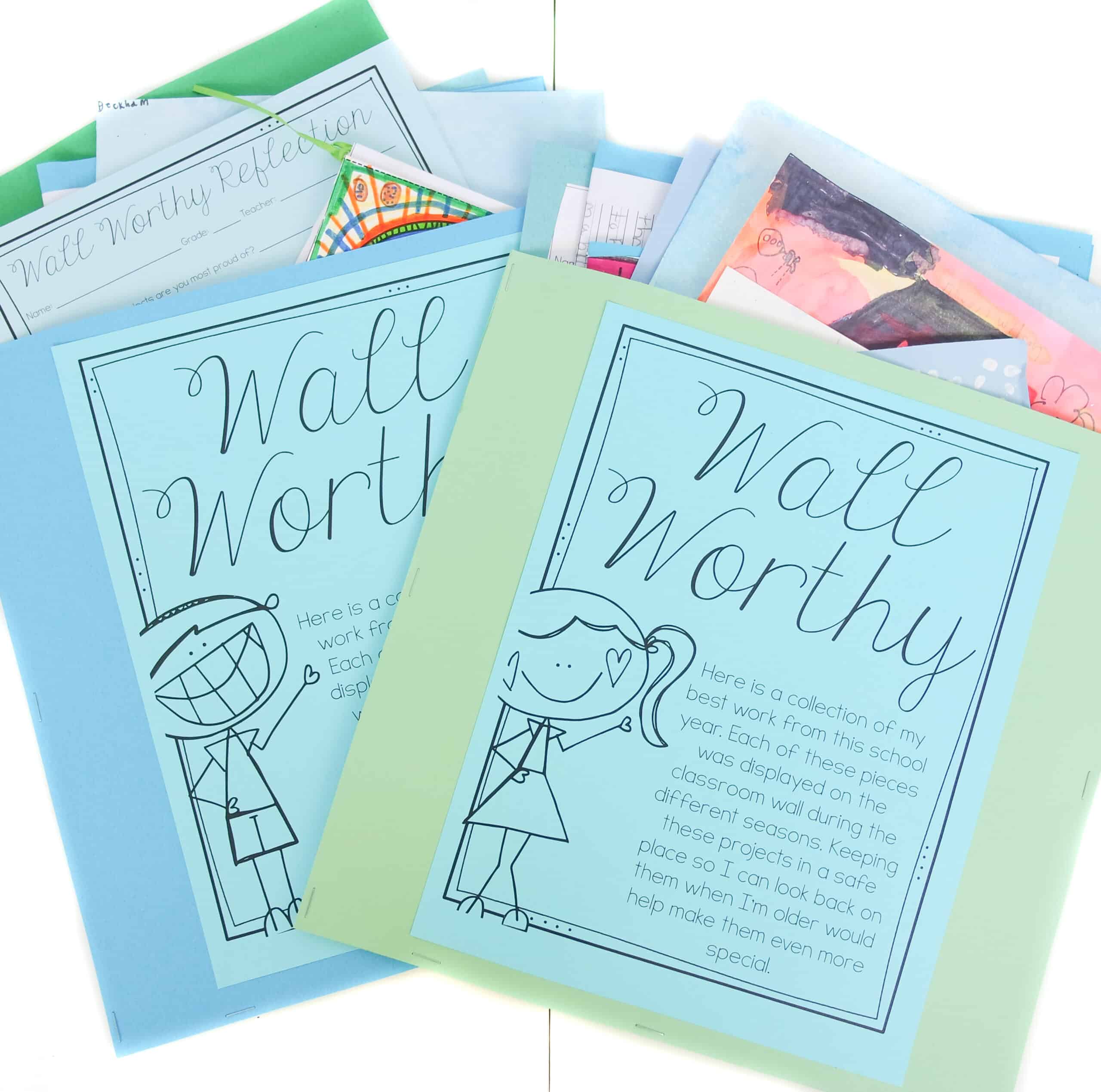
As you may know, problem solving task cards are one of my favorite learning tools for building students’ ability to solve complex word problems. Over the years, I’ve tried a few methods for keeping my task cards organized, and I wanted to take a moment to share those approaches with those of you who are looking for an efficient way for students to use task cards in your classroom.
This post includes affiliate links for which I may make a small commission at no extra cost to you should you make a purchase.
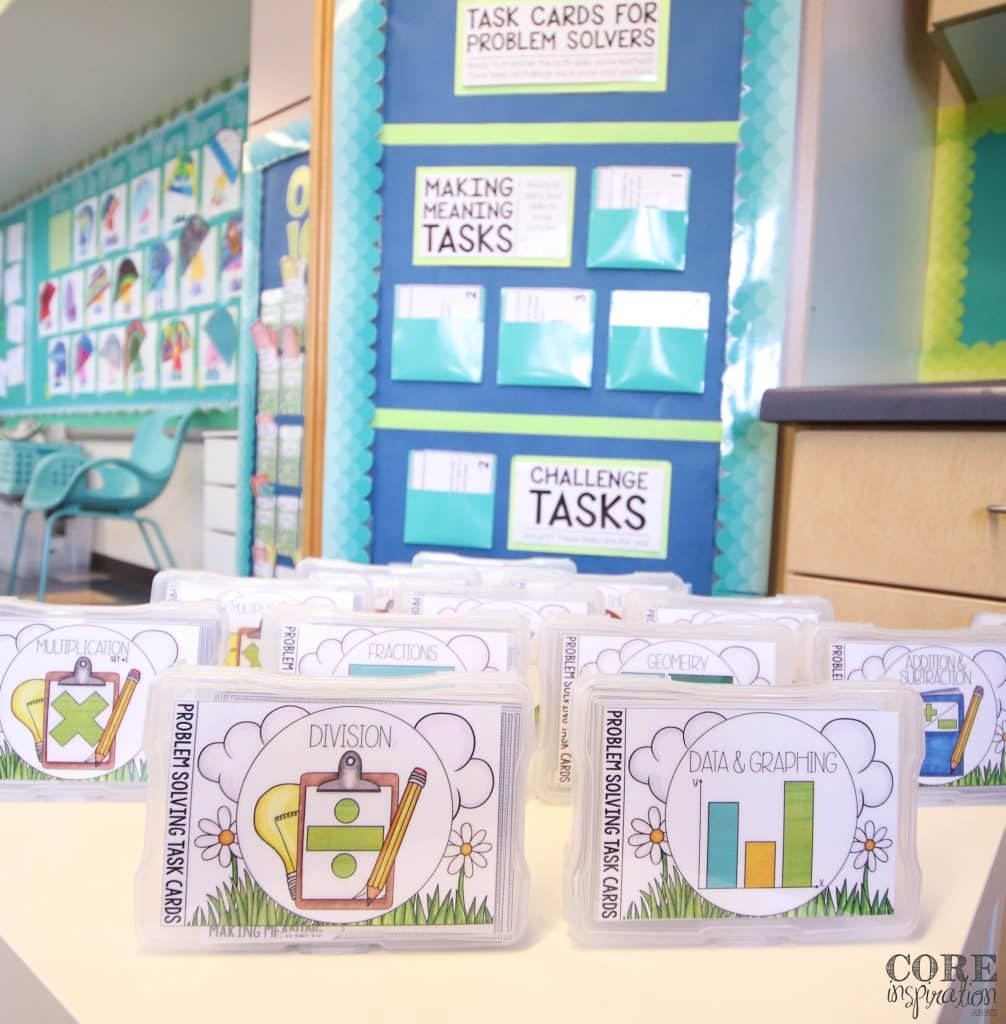
Keep in mind, organization systems are not one-size-fits-all, and you may need to try a couple of approaches to organizing your math problem solving tasks before you find the system that best fits the space you have available. You may also find the approach you use from one year to the next needs some tweaking, depending on the unique learners you teach. Some years may require an approach that incorporates movement, while other years you’ll need something that makes transition time faster for the group you teach.
These are a few approaches I’ve used successfully in my own classroom that may help as you figure out your own organization system.
Hanging your task cards around the room in different locations is an easy way to incorporate a little movement into the At Your Seat rotation of Math Workshop. This approach to organizing task cards only requires you to print one set of task cards, which you can laminate to be reused year after year. After your cards are printed, laminated, and cut, attach them to various surfaces around your classroom using blue painter’s tape or Velcro dots. Students can move around the room as they work on each task, or they can head over to the task they’re currently focusing on, copy the question onto their recording sheet, and then head back to their seat to work.

These two approaches to organizing math tasks are similar and require printing multiple copies of each task card set you are using. After your task cards are printed, punch a hole in the corner of each card and bind them together using a binder ring. Each set can then be hung on Command hooks somewhere in your room or placed inside a reusable plastic zip envelope for extra protection before being stashed in a bin or drawer. Students can grab a complete set of task cards and head to their seat to start solving.
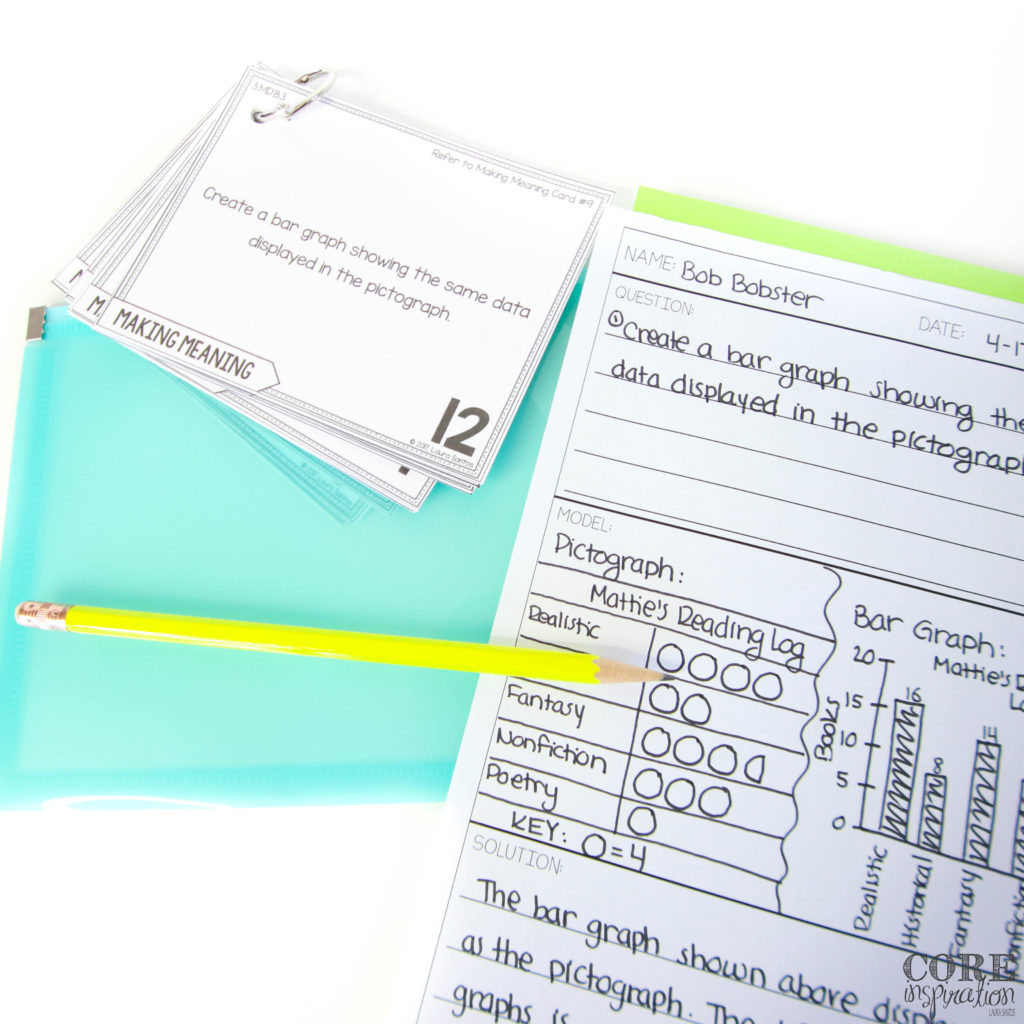
Using laminated card stock paper to create pockets that store your task cards on a bulletin board is a great way to feature a select few tasks from your collection that most closely relate to the lesson being taught that day or week. It’s handy to print 2-3 copies of each task card so multiple students can work on any given task during the At Your Seat rotation of Math Workshop. Students simply walk to the task card display, take the task card they’re interested in working on to their desk, then return it to the same pocket once they’re finished working. Each day or week new tasks can be rotated into the pockets to keep content fresh and relevant. This is the approach I’ve used most frequently in my own classroom. You can read more about the exact process students use to complete problem solving task cards in my classroom here.
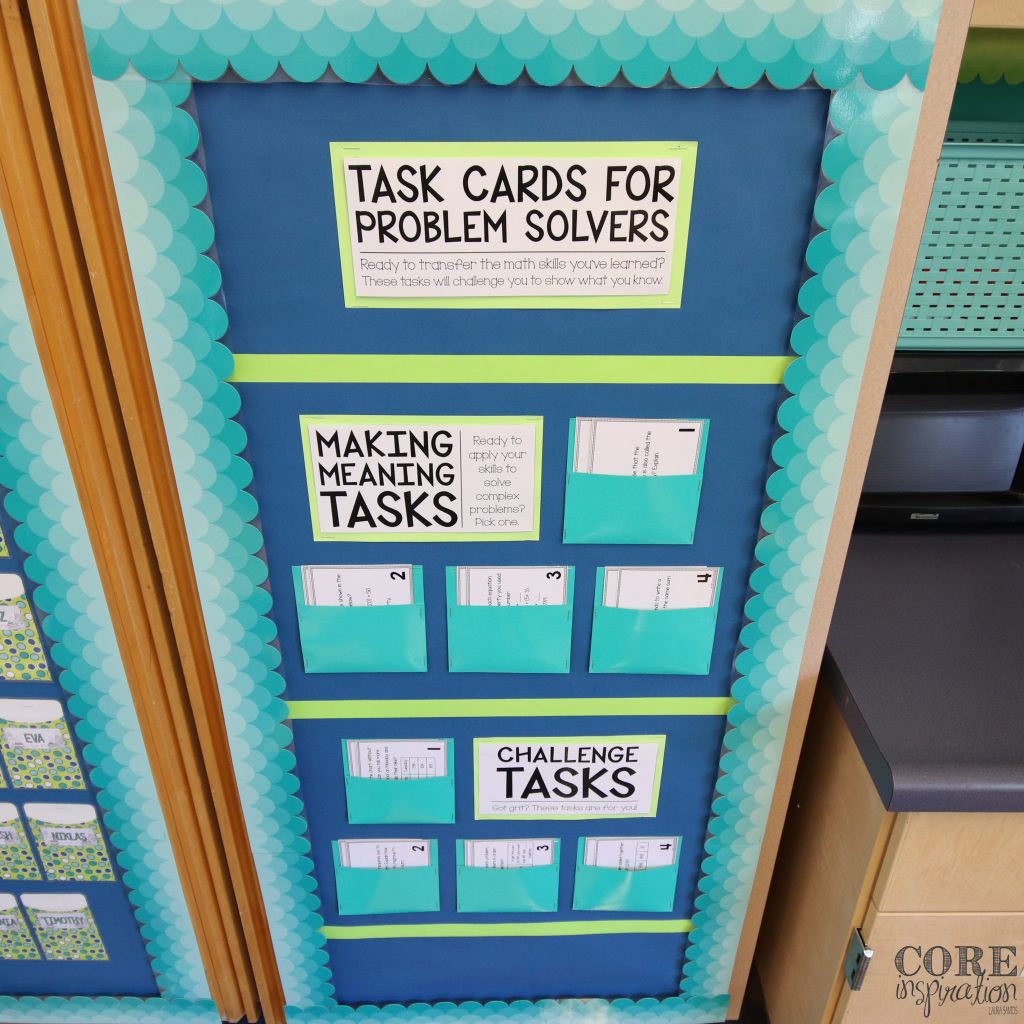
Looking for a super low-prep option? Create problem solving folders by printing and laminating multiple copies of the task cards for your current math unit. Place the laminated sheets inside folders that can be stored in a magnetic bin or inside a small file bin on a shelf or countertop. Printing tasks two-sided saves even more paper and saves a little more space when storing tasks in your archive. You can rotate these task sheets out of the folders for each unit or simply switch out the entire folder for even faster day-to-day prep.
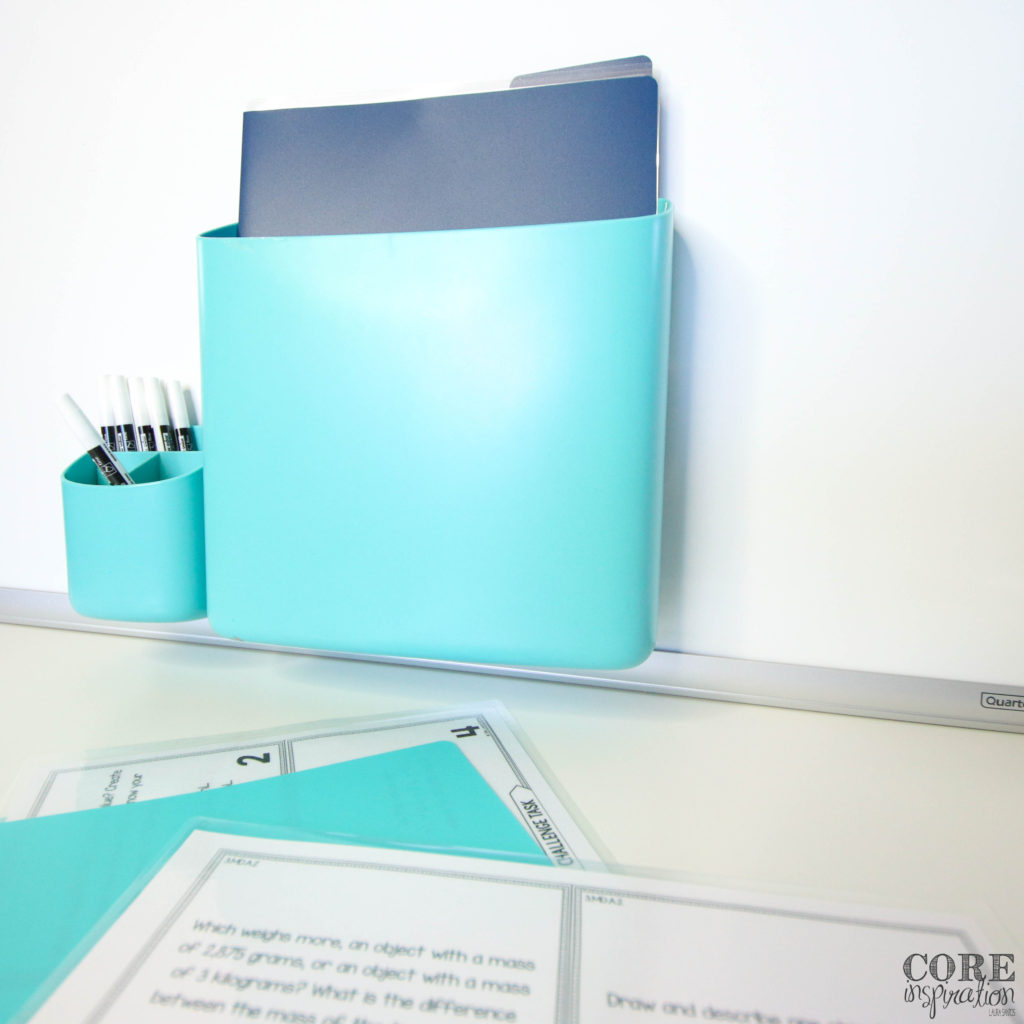
As with any resource, you’ll want to make sure your storage method for task cards that are out of rotation is easy to maintain. This makes prepping materials for each math unit quick and easy and helps your teacher resources stay organized so you can work efficiently. Here are a few suggestions.
Iris photo boxes are the perfect size for storing task cards that have been cut from their full-size page into smaller cards. Keeping these boxes all together in the holder they are sold in is one option for long-term storage, but you can also stash each box in a larger unit box along with all the other materials you use for each math unit.
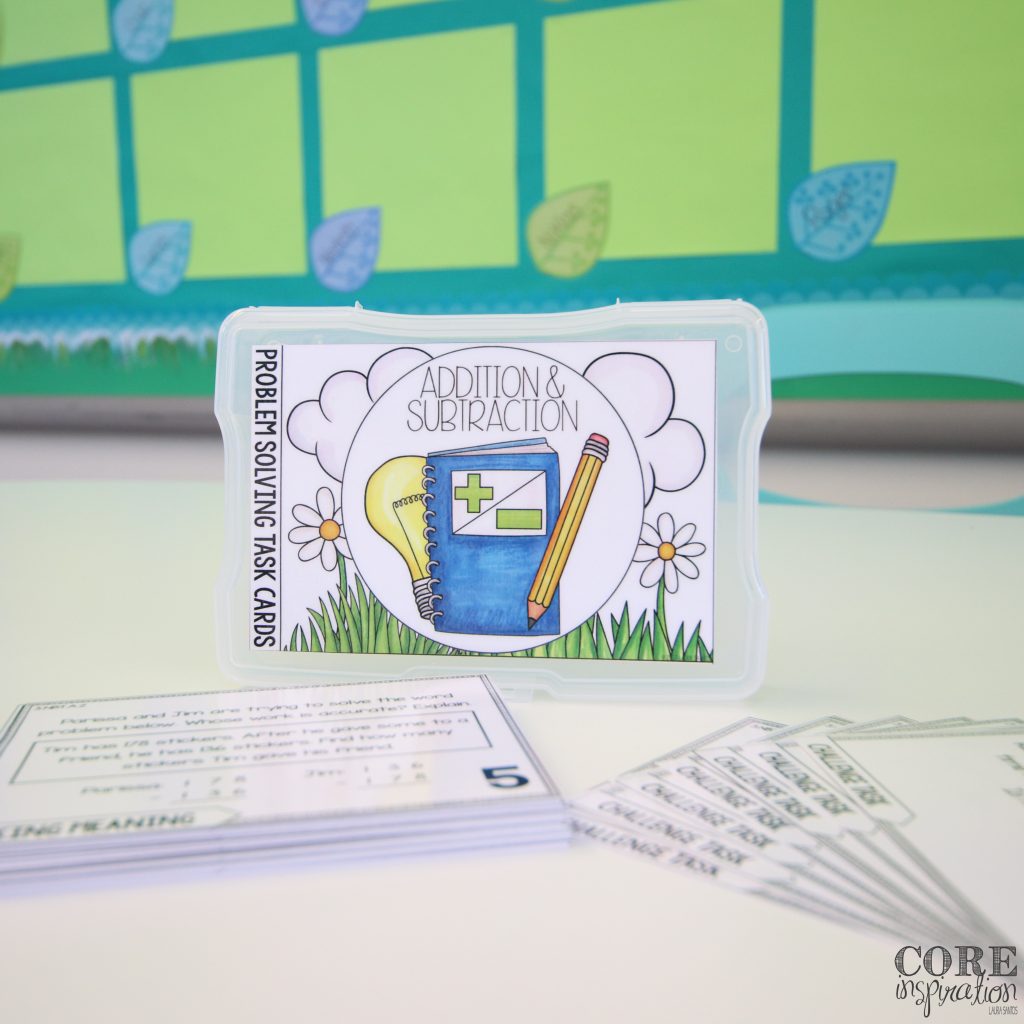
If your tasks are printed on full sheets, then storing them in file folder or a plastic folder makes them easy to locate and store inside a file cabinet, in a file bin, or within unit boxes.
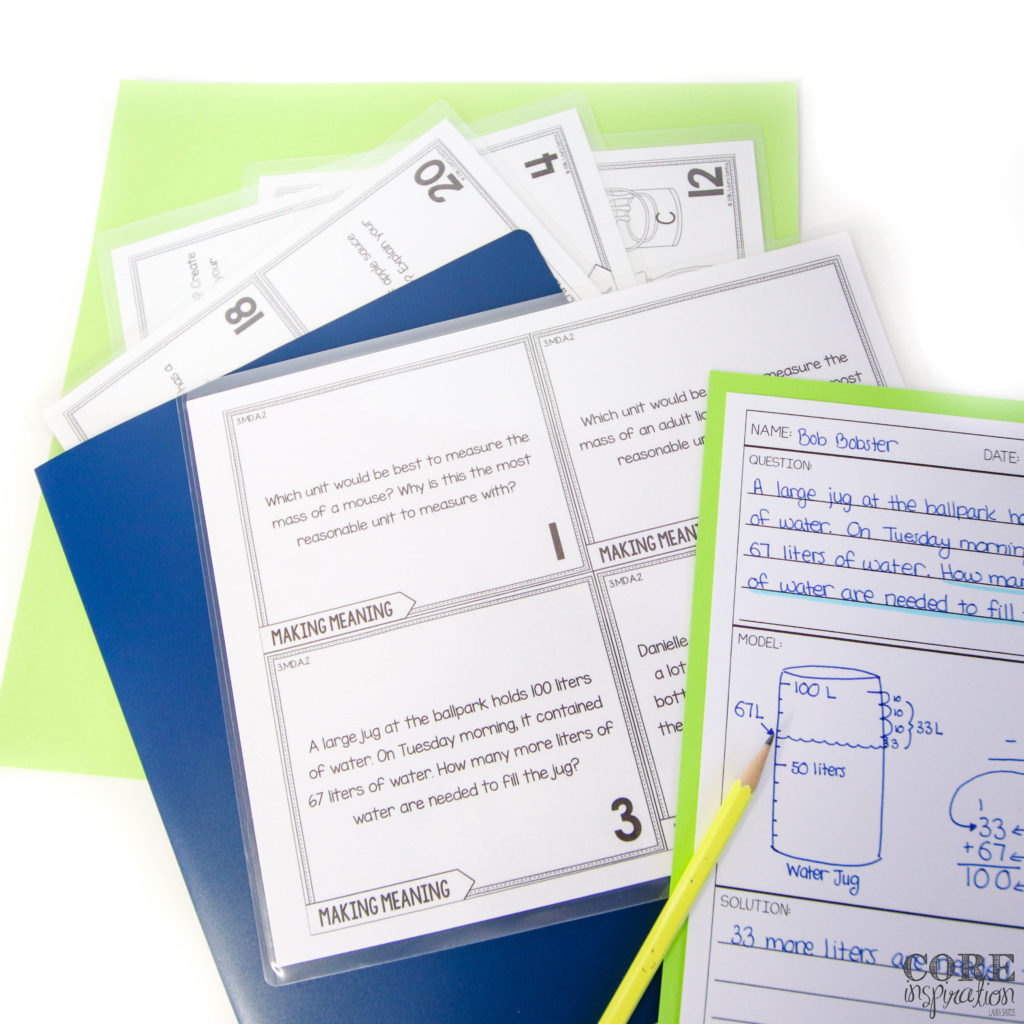
Storing your full-sheet task cards in plastic folders or sheet protectors within a binder is a more condensed storage option, but has the same benefits as the unit boxes described above. You may consider creating a binder for each unit, or you may prefer to have one large binder with every set in one place.
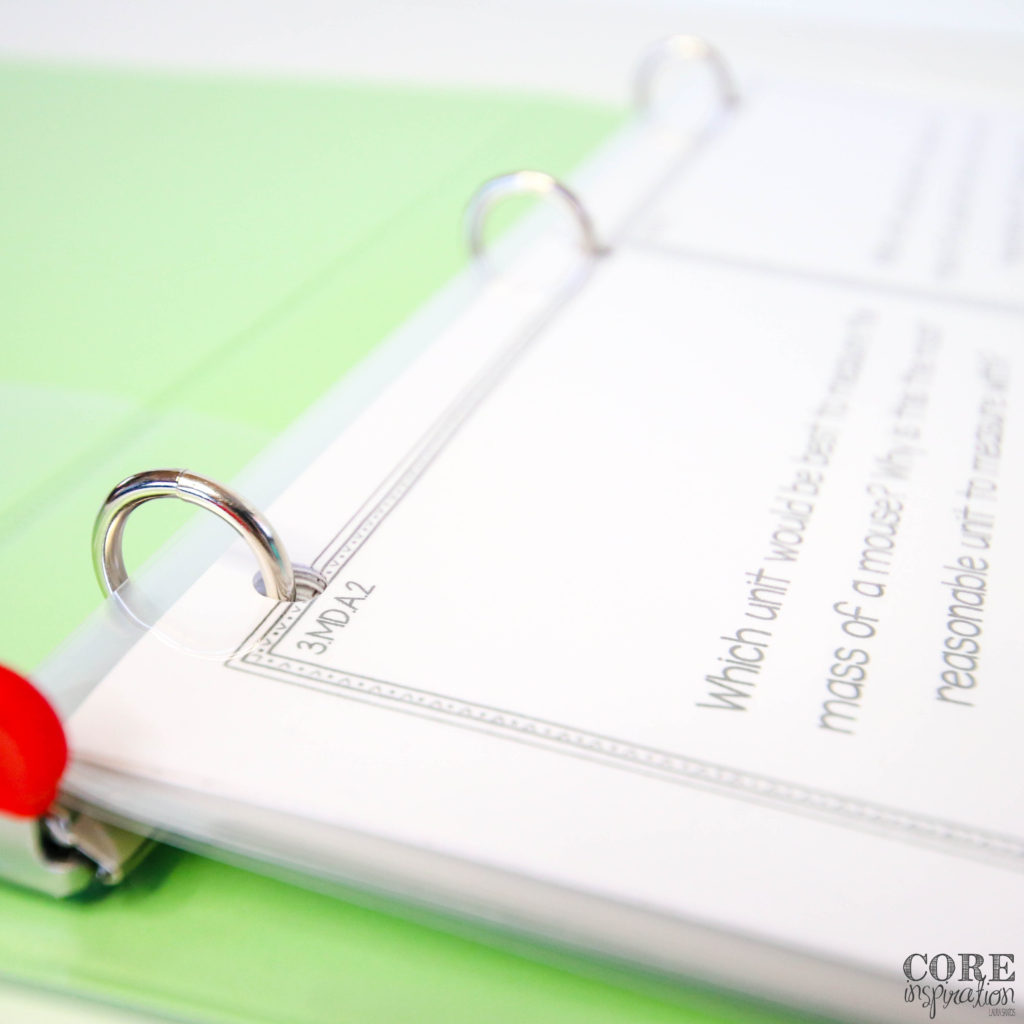
I hope this list of ideas inspires you as you get your own problem solving task cards organized. Comment below with which method you’re using to organize math tasks in your classroom or any tips you have related to task card storage.
If you’re looking for more tips about organizing your supplies for Math Workshop, check out these posts:
For more information about using problem solving tasks during Math Workshop, you may find these posts helpful:
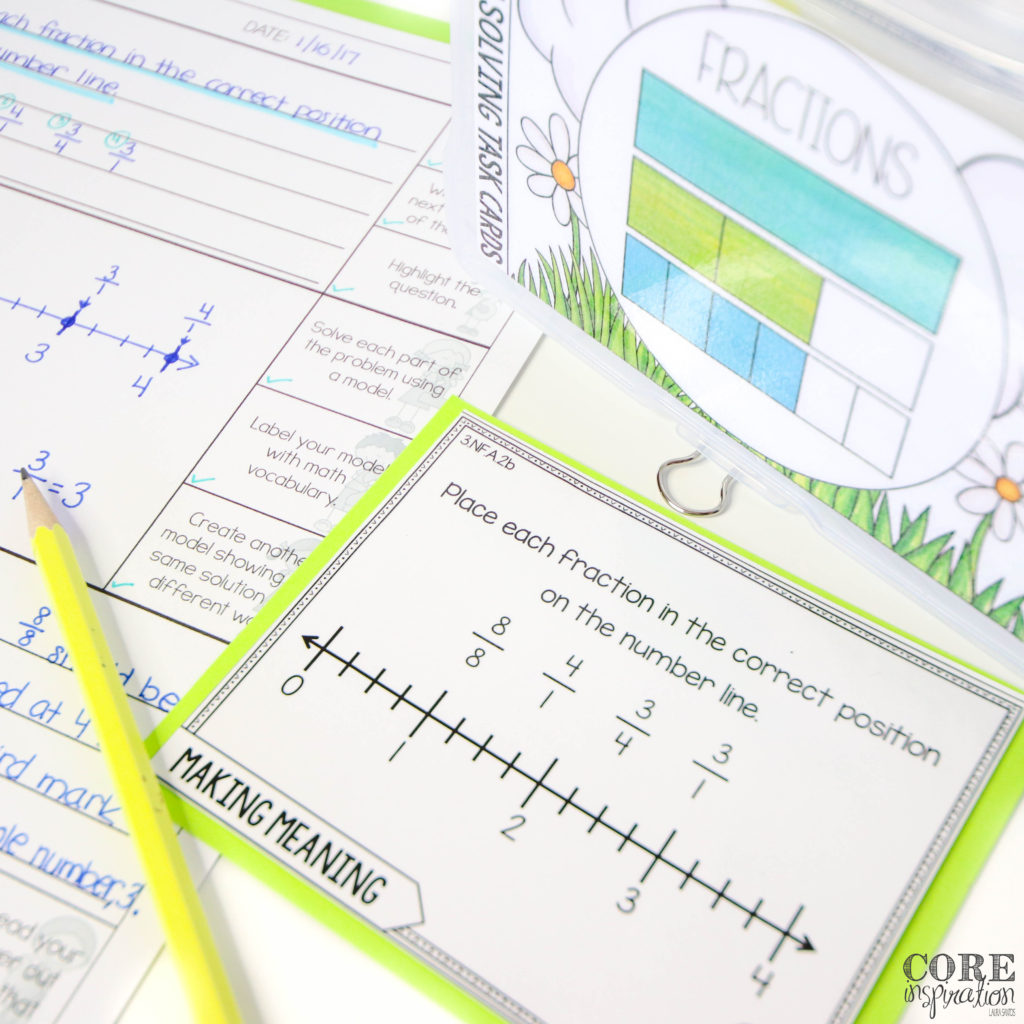
If you are interested in using any of the supplies or resources featured in this post, then this list will make your search a little easier (affiliate links included):
This post contains Amazon Affiliate links to make it easier for you find the supplies shared in this post. To see all my favorite Amazon finds, visit my Amazon Influencer page here.

I’ve been an elementary teacher for ten years, and love sharing tips and resources that make differentiated learning more manageable for you. Thank you for visiting.
Learn More
Dropping by with weekly tips, classroom strategies, and free content created with you in mind.
Join me and other 2nd through 4th grade educators in the Teaching with Core Inspiration Facebook Group. This is a place to collaborate, ask questions, and learn how teachers like you are using Core Inspiration resources in their classrooms. Hope to see you there!
© 2024 Core Inspiration ∙ Website by KristenDoyle.co